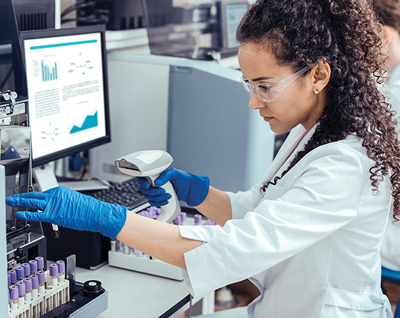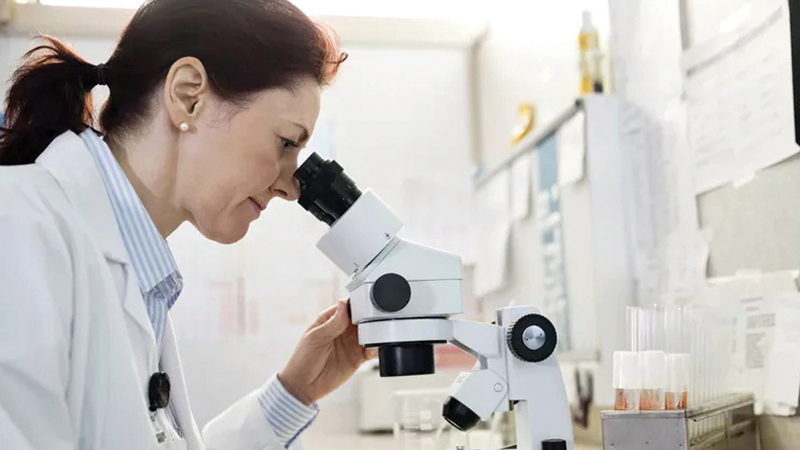Extraordinary claims require extraordinary evidence. Whether it is Dhammika Pani, a new anti-cancer, anti-aging, or a new antiviral medicine making big headlines, we as a society often fail to understand and react properly. Today’s society is misled by pseudoscience claims, myths, and irrational hypotheses. It is incumbent on all scientists to equip the public with well-versed tools so that people can scientifically evaluate such claims and incorporate good scientific innovations into their daily lives.
As a senior scientist with a Ph.D. in biochemistry, engaged in drug discovery for years, herein, I attempt to lay out some fundamental questions and facts that anyone can ask to challenge such new medicine discovery claims.
There is a story and a saying among us, “Leda malath bada suddai.” This seemingly amusing Sinhala phrase reflects the foundation of medicines or drugs, emphasizing two fundamental requirements: safety and efficacy. I want to repeat it over and over. It is safety and efficacy. The story reflects what happens if efficacy is met yet safety fails.
On the other hand, thousands of people drank Dhammika Pani, yet reported no safety concerns. That’s an example of a safe yet efficaciously challenged drug. So, how can you evaluate the efficacy and safety of a new drug without expertise in science? Here are five basic things about new drug discoveries that will help you think like a scientist.
Is it an approved drug?
In the modern world, almost all countries have an agency dedicated to approving a drug before it is available for doctors to prescribe. For example, the US has the FDA, Europe has EMA, and Sri Lanka has the National Medicines Regulatory Authority (NMRA). If the drug has been approved by the government agency and prescribed by a qualified doctor, you can relax your analysis, as the hard part has been done by a dedicated, highly qualified panel of scientists and doctors. The gold standard procedure for a new drug to get approved is that it should undergo discovery, pre-clinical animal studies, Phase I, II, and III, and later, Phase IV clinical trials. This process has been developed to vigorously test the efficacy and the safety of a drug.
Is it a drug or a dietary supplement?
A significant loophole in drug approval is that dietary supplements bypass the same stringent testing required for pharmaceuticals. This exemption arises due to the challenge of regulating individual dietary choices by government agencies. While new dietary supplements should adhere to safety standards, they aren’t obliged to demonstrate efficacy in the manner required for drugs. Consequently, the dietary supplements arena resembles the wild west, where unverified claims abound.This unregulated space provides an appealing avenue for marketing products without undergoing the extensive testing essential in drug discovery. Therefore, when considering non-approved drugs, it becomes crucial to ponder the following facts.
Is the claim scientific?
 As opposed to many other fields of science, drug discovery tends to file patents before publishing in scientific journals to claim intellectual properties. There is a big difference between a patent and a published article. For a patent, what matters the most is who has the rights to a scientific invention. It doesn’t matter how important the invention is or does that invention make a big impact.
As opposed to many other fields of science, drug discovery tends to file patents before publishing in scientific journals to claim intellectual properties. There is a big difference between a patent and a published article. For a patent, what matters the most is who has the rights to a scientific invention. It doesn’t matter how important the invention is or does that invention make a big impact.
However, if a drug or a supplement passes clinical trials, the data should be published in reputable peer-reviewed journals. At that stage, efficacy and safety will be challenged by the scientific community.
Having anti-cancer properties is not enough to be an anti-cancer drug
In order for a drug to work, it should show efficacy in an animal model or in humans. Often, we hear that some molecules have anti-cancer properties or antibacterial, antifungal properties.
These refer to some properties of the molecules. For example, if a molecule has antioxidant properties, it can potentially reduce the chances of free radical generation. Free radicals are the molecules in our body that can cause DNA damage and lead to cancer. That being said, it doesn’t mean such molecules can cure cancer or can even prevent cancer.
For example, there are so many antioxidants in tea. That doesn’t mean drinking tea prevents cancer. It could reduce the risk of cancer. The same logic applies to antibacterial, antiviral, anti-aging substances. Just because turmeric has antibacterial properties doesn’t mean we should eat turmeric when we have pneumonia. Yes, these natural molecules have immense potential for drug development, but safety and efficacy should be scientifically established. And for that reason, these natural molecules often require chemical modifications.
Just because something is natural doesn’t mean it’s safe
Living organisms are full of organic molecules. Some of them are very difficult to chemically synthesise. When we eat a healthy meal, full of vegetables and fruits, we are ingesting thousands of different organic molecules.
However, they are present in minuscule quantities. For example, cinnamon has hundreds of molecules, mainly containing cinnamaldehyde and eugenol. However, it also contains a chemical called coumarin.
Coumarin can pose health risks, especially liver toxicity at high doses. In fact, our Ceylon cinnamon is world-famous for the fact that it contains a relatively very small amount of coumarin. Thus, any natural substance has a maximum tolerable dose (MTD) which has to be scientifically evaluated. Again, it comes down to safety and efficacy.
If you hear about a new drug, you should wait until it gets approved and prescribed by your doctor. If it is a dietary supplement, the water gets muddy. Safety and efficacy should be demonstrated in animals and humans by proper scientific studies, and the data should be published. Just because some natural ingredient has good anticancer, antioxidant, antibacterial properties doesn’t mean we should take them without understanding the efficacy and safety.
Drug discovery is all about safety and efficacy. If you are asked to step into an airplane, you should know that it meets the safety and efficacy requirements. If the airplane flies as expected (efficacy) but is not safe, you should avoid it. If the airplane is safe, yet it doesn’t fly away, it is still not worth getting into it. Ideally, the authorities should have evaluated the safety and efficacy so that we don’t have to dig deep. But if not, we should have the right public knowledge to understand the safety and efficacy to avoid thousands of people rallying to drink the next Dhammika Pani.
Nestled within the embrace of a tropical island boasting unparalleled biodiversity, we find ourselves on the brink of a treasure trove. With thousands of natural compounds, accompanied by centuries of anecdotal evidence attesting to their therapeutic potential, we have the raw materials for groundbreaking drug development. Yet, to bring forth novel therapies, we must subject these compounds to rigorous comparison with existing drugs.
To establish our position on the global stage and harness the economic potential inherent in these resources, it is imperative to institute systematic and scientifically rigorous procedures.
By adhering to gold standard protocols, we can ensure that our country not only competes effectively but also leaves a lasting impact on the world stage through innovative and impactful drug development.







